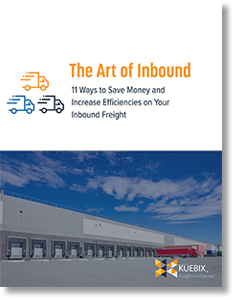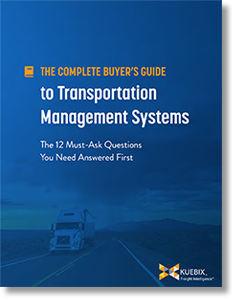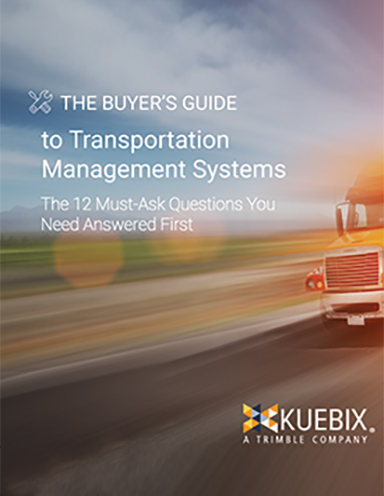It’s Almost October and the Holiday Hiring Has Arrived for the Transportation & Logistics Sector

Transportation and logistics companies are getting ready for the holiday season - hiring additional workers, renting warehouse space, adding more drivers or contracting with additional carriers, and putting stock on shelves.
The Holiday Hiring Season
The time for holiday hiring has arrived, with three of the biggest households in the freight transportation and logistics sectors-UPS, FedEx, and XPO Logistics, each making announcements to that effect over the last few days.
The need for extra help, in form of staffing, is not a new, or novel, approach by any stretch of the imagination.
Instead, it is something that is required and needed, in order to keep up with the heightened demand that this new age of e-commerce and related last-mile logistics efforts, brings with it.
And when you factor in the holidays, well, it becomes quickly apparent that every one of these additional hires, even if temporary for the most part, are truly needed and serve as vital cogs in the fulfillment, distribution, warehousing, and delivery processes for each of these three companies.
Greenwich, Conn.-based XPO Logistics said it plans to hire 8,000 North American-based logistics staffers for the peak holiday season.
This looks to be a good decision at a good time, as the company said that its retail logistics volume through August is up around 20% compared to 2017, with the gains paced by consumer-demand for e-commerce and omnichannel retail fulfillment.
“We’re ramping up for the holiday season and another significant increase in e-commerce activity,” said Troy Cooper, XPO president, in a statement.
“We expect to add 8,000 seasonal jobs before November – a significant increase over last year’s holiday hiring. Our modern warehouses are filled with automation that is an attractive choice for workers and helps us to be as productive as possible for our customers.”
UPS, as usual, announced a significant seasonal staffing increase, with an expected 100,000 seasonal staffers to support what it described as its anticipated package volume increase from November through next January.
Big Brown said these seasonal positions are both full- and part-time, mainly for package handlers, drivers, and driver-helpers.
What’s more, it noted that these seasonal roles have long served as a springboard to full-time employment, as was as the case for UPS CEO David Abney and other senior UPS executives as well. UPS also said that over the last three years, 35% of the seasonal staffers it brought on became full-time staffers once the holiday season wrapped up.
“Every year, we deliver the holidays for millions of customers,” said Jim Barber, UPS chief operating officer, in a statement.
“In order to make that happen, we also deliver thousands of great seasonal jobs at our facilities across the country.”
Lastly, when announcing the move for its FedEx Ground subsidiary to up its U.S. operations to six days a week, Memphis-based FedEx announced it plans to increase hours for some existing staffers and hire roughly 55,000 positions for the holiday season.
It also noted that FedEx Ground again plans to run six- and seven-day operations through the holiday season and also continue six-day operations throughout its U.S. network on a year-round basis.
FedEx said it expects a record influx of volume for this year’s holiday season and beyond, too, due to (you guessed it) increasing e-commerce demand. And FedEx made it clear that the rise in demand for e-commerce goes beyond peak, observing it is a “year-round phenomenon” and FedEx is prepared to meet that demand.
No matter how these companies word it, the fact remains that more e-commerce activity means more package volume, which means more staffers are needed to fill.
While unemployment is low, it stands to reason that these seasonal jobs may not be as easy to fill as they may have been in the past. But the opportunities are there, to be sure, and as in the case of UPS CEO Abney can potentially open the door to a bright future in the logistics field.
Buoyed by decent economic fundamentals and people shopping more than ever from the “virtual mall,” it is clear this is more than a trend and has been that way for more than a while, too. That will likely play out in the form of growing package volumes and the constant need for seasonal help.
6 Ways Companies Can Ready Their Supply Chains for the Holidays
“Because of the rise in the number of e-commerce orders during the holiday season, there is a big increase in transportation requirements for everything from last-mile packages delivered to a consumer’s home to inbound shipments coming into a distribution center,” said Dan Clark, Founder and President of Kuebix.
Read: It’s Almost October – Time To Get Ready For the Holidays!
- Give customers visibility to their orders. Using technology, retailers can provide Amazon-like experiences by tracking shipments in real-time and alerting customers if orders will be delayed. Carriers can house shipment information letting suppliers and customers know where their goods are and when to expect them to arrive at the next destination. With complete visibility, businesses can get more details on bottlenecks or specific incidents if there is an issue such as product damage or late delivery.
- Prepare to use the spot market to make up for excess demand not covered by carriers. Shippers can leverage their negotiated rates from their existing carrier relationships, and compare the full depth of market pricing across the spot bidding marketplace to find the best rates for the best service or to find the extra capacity to meet excess demand.
- Get more rates by connecting with more carriers. Connect to a global community with thousands of carriers, then compare all their rates side-by-side and choose the best carrier for each shipment, leading to substantial cost savings and better customer service.
- Get products as local to customers as possible. Many retailers are acquiring new, smaller warehouse space closer to their customers to shorten delivery times and journeys. Also, orders can be fulfilled from storefronts with end-to-end visibility of inventory. The shorter the distance from where inventory resides to the end customer, the faster the delivery and the lower the cost.
- Integrate internal systems like ERPs with transportation management platforms. The ability to integrate purchase orders automatically from an ERP system directly into the TMS cuts out paperwork and admin hours. Since the integration is two-way, shipment data is populated back into the ERP system for record-keeping and to provide stakeholders with complete visibility. This enables information down to the SKU level to be leveraged in claims management, meaning the shipper always has the information they need to protect their company’s interests. Shippers can also better understand the true landed cost of goods to make smarter decisions regarding their company’s bottom line when they integrate purchase orders directly from an ERP system.
- Get a TMS or replace legacy TMS platforms. Look for a TMS system that is modular and scalable so that it can expand as needs change during the busy holiday season. A cloud-based platform means faster implementation before the busy season and will have lower support costs. Actionable analytics from the TMS will help businesses make smarter shipping decisions and foster continuous improvements ahead of the holidays to ensure the supply chain is fully optimized.
“Black Friday, Cyber Monday and numerous holiday promotions all add to the huge spike in demand. Shippers need to keep operations flowing and use tools to handle the upsurge while keeping customers satisfied” said Clark.
Getting ready for the demand spikes imminent with the holiday season will keep businesses on track to meet customer expectations. Rising demand during the holiday season will ‘make or break’ businesses; a little preparation will separate those with winning strategies from those without.
Source: Kuebix
Related White Papers & eBooks
Driving Supplier, Carrier and Customer Collaboration
This ebook describes how through the use of collaboration portals with various stakeholders, you will be able to effectively manage your cost of goods and consistently meet the expectations of your internal and external customers. Download Now!
The Art of the Inbound: 11 Ways to Improve Your Inbound Shipping Operations
This ebook provides a guide to benchmark your company against best practices in the transportation and shipping industry and helps to put together a strategic approach to capitalizing on the opportunities to manage the “art of the inbound.” Download Now!
The Complete Buyer’s Guide to Transportation Management Systems
There is almost no limit to how a Transportation Management System can benefit your unique supply chain, but the key to success is finding the right one for your goals, so, before selecting a TMS, use the 12 questions in this buyer’s guide to find the best solution for your company. Download Now!
Effectively Managing Big Data in Your Supply Chain
In this white paper, we’ll explain what the term “big data” means to the typical supply chain, introduce effective strategies for managing and leveraging that data, show how one grocer is using predictive analytics to harness its own big data, and explain the “first steps” that companies need to take down the path to effective management of their big data. Download Now!
More Resources from Kuebix
Article Topics
Kuebix News & Resources
Visibility + TMS = A Winning Combination Trimble Placed in 2021 Gartner Magic Quadrant for Real-Time Transportation Visibility Platforms Kuebix Positioned Again as a Challenger in 2021 Gartner Magic Quadrant for TMS The Buyer’s Guide to Transportation Management Systems TMS Update: Adoption accelerates The Logistics of Valentine’s Day during COVID-19 Pandemic Research: Trends in the Supply Chain and Their Impact on the Transportation Management System Market More KuebixLatest in Transportation
Why are Diesel Prices Climbing Back Over $4 a Gallon? Luxury Car Brands in Limbo After Chinese Company Violates Labor Laws The Three Biggest Challenges Facing Shippers and Carriers in 2024 Supply Chain Stability Index: “Tremendous Improvement” in 2023 Trucking Association CEO on New Biden Policy: ‘Entirely Unachievable’ Two Weeks After Baltimore, Another Cargo Ship Loses Power By Bridge Examining the freight railroad and intermodal markets with Tony Hatch More TransportationAbout the Author



















